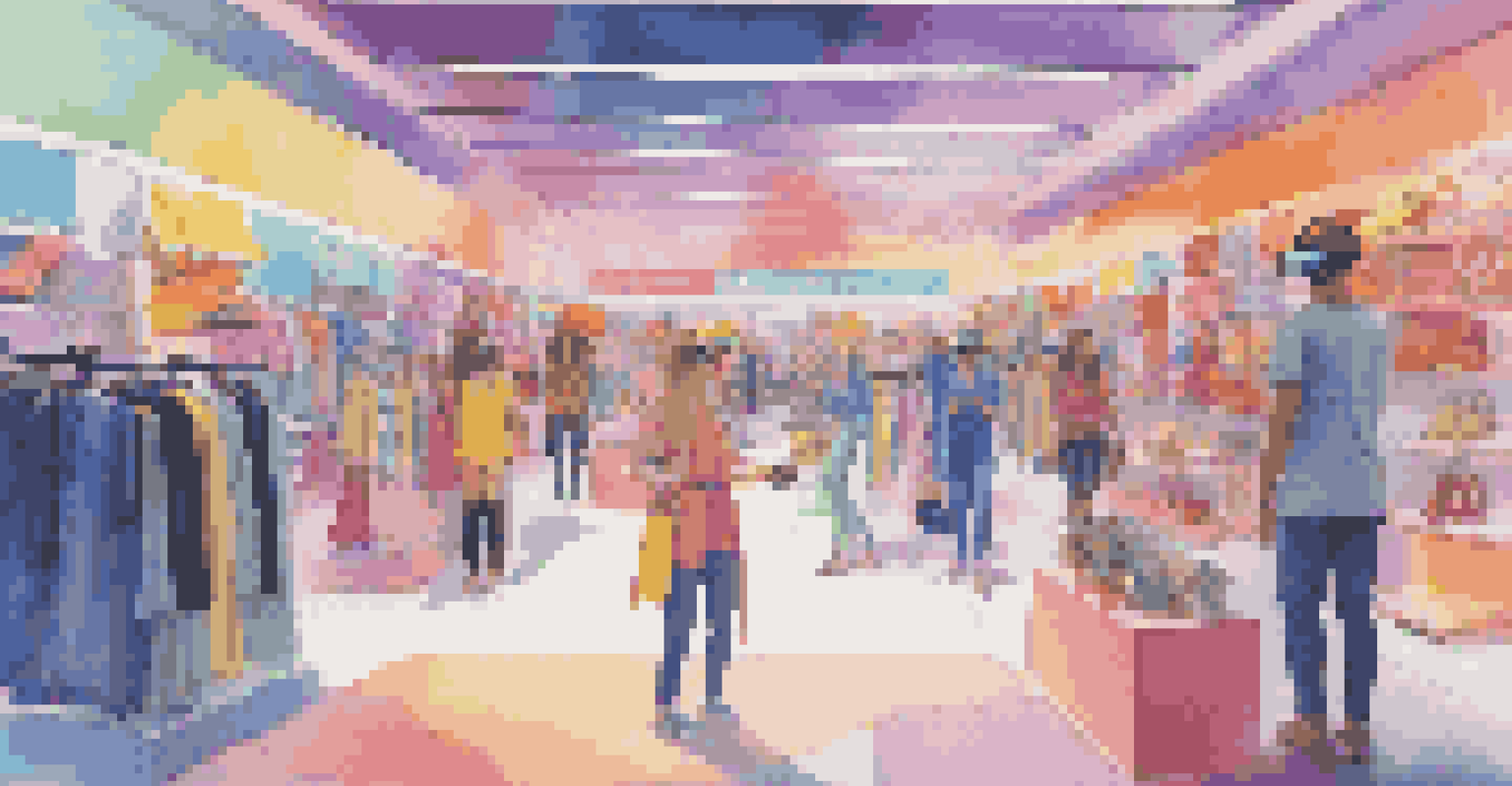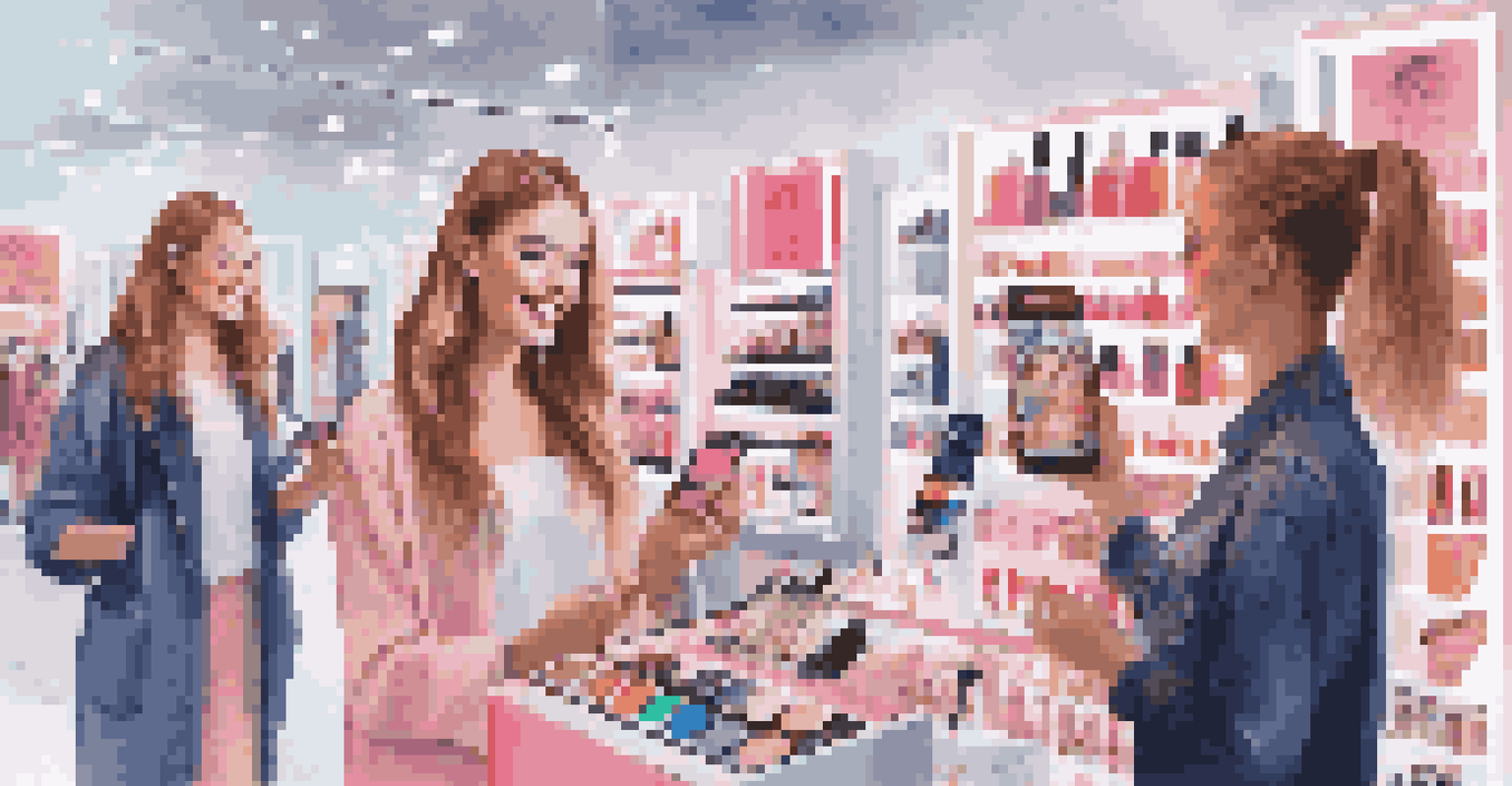AR and VR in Retail: Enhancing Customer Journey and Loyalty

Understanding AR and VR: A Retail Perspective
Augmented Reality (AR) and Virtual Reality (VR) are innovative technologies that are making waves in retail. While AR overlays digital information onto the real world, VR creates immersive environments for users. This distinction is crucial for retailers looking to enhance the shopping experience, as each technology offers unique benefits.
The future of shopping is not just about products, but the experiences that bring them to life.
For instance, AR can help customers visualize how furniture looks in their home before making a purchase, while VR can transport shoppers into a virtual store from the comfort of their couch. These experiences not only engage customers but also influence their buying decisions. Understanding these tools is the first step in leveraging them effectively.
As retailers embrace these technologies, they open doors to countless possibilities in improving customer interaction and satisfaction. This understanding sets the stage for deeper exploration into their real-world applications.
Creating Immersive Shopping Experiences with VR
Virtual Reality offers an unparalleled way to engage customers by immersing them in a simulated shopping environment. Imagine stepping into a virtual store, browsing aisles, and trying on clothes without ever leaving your home. This level of interaction can make shopping feel like an adventure, rather than a chore.

Retailers like IKEA have already embraced VR, allowing customers to explore virtual showrooms and experiment with different layouts in their homes. Such experiences can build excitement and anticipation around products, enhancing the overall customer journey. When customers feel emotionally connected to a brand, loyalty tends to follow.
AR and VR Transform Retail
Augmented Reality (AR) and Virtual Reality (VR) are revolutionizing the retail landscape by creating immersive and interactive shopping experiences.
As technology advances, we can expect even more sophisticated VR experiences, including personalized recommendations based on past purchases. This personalization can further deepen customer loyalty, making them more likely to return.
Harnessing AR to Enhance In-Store Experiences
Augmented Reality enhances the in-store shopping experience by providing interactive elements that engage customers. For example, shoppers can use AR apps to scan products for additional information, such as reviews, pricing, and even sustainability ratings. This instant access to information empowers customers to make informed decisions.
Technology is best when it brings people together.
Brands like Sephora have successfully implemented AR by allowing customers to virtually try on makeup through their app. This not only improves customer satisfaction but also reduces the likelihood of returns, as customers are more confident in their choices. It’s a win-win for both retailers and consumers.
Integrating AR into physical stores can also create a more dynamic atmosphere, encouraging shoppers to spend more time exploring. When customers feel that their needs are prioritized, their loyalty to the brand strengthens.
Personalization Through AR and VR: A Game Changer
Personalization is key in today's retail landscape, and AR and VR are leading the charge. These technologies allow retailers to tailor experiences to individual preferences, creating a sense of exclusivity. For instance, a VR shopping experience could recommend products based on a shopper’s past behavior, effectively curating their journey.
Furthermore, AR can provide customized promotions or discounts based on the customer’s history or location, making offers feel more relevant and timely. This level of personalization not only enhances the shopping experience but also fosters a deeper emotional connection with the brand.
Personalization Drives Loyalty
Leveraging AR and VR allows retailers to offer personalized experiences that resonate with customers, fostering deeper emotional connections and brand loyalty.
As customers increasingly seek personalized experiences, retailers who leverage AR and VR technologies will stand out from the competition, driving loyalty and repeat business.
Boosting Customer Engagement with AR and VR
Engagement is crucial for building long-term customer relationships, and AR and VR offer exciting opportunities to enhance this aspect. Interactive experiences, such as AR games or VR experiences linked to brand storytelling, can captivate customers and keep them coming back for more. For example, a clothing retailer could create a VR fashion show, allowing customers to experience the latest trends in an immersive way.
These engaging experiences can also encourage social sharing, as customers are more likely to post about unique and fun interactions on social media. This organic promotion can draw in new customers who are curious about what others are experiencing.
By fostering an engaging environment, retailers not only enhance the customer journey but also create advocates for their brand, increasing loyalty in the long run.
Building Customer Loyalty Through Memorable Experiences
Creating memorable experiences is one of the most effective ways to cultivate customer loyalty. AR and VR can create moments that customers will remember long after their shopping trip. For instance, a retail brand could host an AR scavenger hunt in-store, rewarding participants with discounts or exclusive products, thus creating a fun and engaging atmosphere.
These experiences not only make shopping enjoyable but also encourage repeat visits, as customers will want to relive that excitement. When customers associate a brand with positive, memorable experiences, they are more likely to return and recommend it to others.
Engagement Through Memorable Experiences
Creating engaging and memorable experiences using AR and VR not only enhances customer interaction but also encourages repeat visits and social sharing.
Ultimately, the goal is to turn casual shoppers into brand loyalists through unforgettable encounters facilitated by AR and VR.
The Future of Retail: Trends and Innovations in AR and VR
As technology continues to evolve, the future of retail will be increasingly influenced by AR and VR innovations. We can expect to see advancements like AI-powered virtual assistants that guide shoppers through their experience, making suggestions based on their preferences. Such developments will further streamline the shopping journey, enhancing convenience.
Additionally, improvements in AR and VR hardware, such as more affordable headsets and smartphone compatibility, will make these technologies accessible to a broader audience. This accessibility will drive widespread adoption among retailers looking to differentiate themselves in a crowded market.

Ultimately, staying ahead of these trends will be essential for retailers seeking to enhance customer experience and loyalty. Embracing AR and VR will not just be a trend but a necessity for future success.